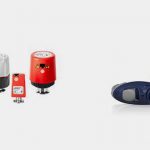Even if we don’t notice their presence in our daily lives, vacuum pumps have been around for over three hundred years dating back to its invention in 1650 by Otto von Guericke.
Really?
There are many kinds but they can be categorized into 3 groups according to the way they function:
- Momentum transfer: generally use high speed blades to suck air or gas from a particular space.
- Entrapment : is a technique used to capture gases
- Positive Displacement: is based on expanding a cavity in order to make a specific gas enter and once it has, sealing the cavity and releasing the gas into another space (generally the atmosphere).
But Where Are They?
There are many uses to vacuum pumps specifically when it comes to industrial and scientific research processes ranging from simple milking machines to hard core science such as fusion research, uranium enrichment or the development of electron microscopy.
But in fact, they are a part of our daily lives even if we can’t actually see them. For example, did you know that the hydraulic brakes of your car work with this mechanism? Other motor functions like the cruise control or the door locks also have vacuum based functionalities.
Benefits of a Vacuum Pump on an Engine
Generally, a vacuum pump will only be of benefit for an engine that creates a significant amount of air or gas due to its high performance, by adding some horse power and increasing the life of the engine.
By putting a negative pressure on the machinery, it will reverse problems caused by the increase of pressure in the pan that pushes oil entrained in the air past the rings on the intake’s stroke and the valve guides
Other Functions
As we mentioned before, there are many kinds and the weapon of choice will vary according to wants to be accomplished: perhaps you would like a dry-running radial pump, or on the other end of the spectrum an oil-lubricated screw pump. Whether you are replacing an old part of a system or replacing the whole system itself the deciding argument generally boils down to energy conservation or low noise emission.























